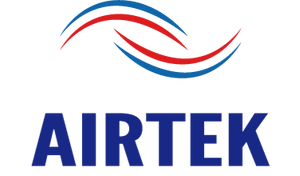Regular maintenance of your mini-split system is essential to ensure optimal performance, energy efficiency, and longevity. Neglecting routine upkeep can lead to reduced efficiency, higher electricity bills, and potential system failures. This comprehensive guide provides HVAC dealers across Canada with the necessary steps to maintain mini-split systems effectively.
1. Understanding Mini-Split Systems
Mini-split systems offer a versatile and efficient solution for heating and cooling individual rooms or zones within a building. They consist of an indoor unit and an outdoor unit connected by refrigerant lines, allowing for targeted climate control without the need for extensive ductwork. Some mini-splits function solely as air conditioners, while others, known as mini-split heat pumps, provide both heating and cooling capabilities.
2. Importance of Regular Maintenance
Over time, dust, dirt, and other pollutants can accumulate in mini-split systems, affecting their performance and indoor air quality. Regular maintenance tasks, such as cleaning filters, coils, and drainage components, help maintain optimal airflow and prevent issues like reduced efficiency and system breakdowns. While some tasks can be performed by homeowners, comprehensive maintenance should be conducted by certified HVAC technicians at least once a year, preferably in spring and fall.
3. Mini-Split Maintenance Checklist
Cleaning the Indoor Unit:
-
Air Filters: Clean or replace the air filters regularly to ensure proper airflow and maintain indoor air quality. Clogged filters can reduce efficiency and strain the system.
-
Coils and Fins: Dust and dirt can accumulate on the evaporator coils and fins, hindering heat exchange. Carefully clean these components to maintain efficiency.
Maintaining the Outdoor Unit:
-
Debris Removal: Keep the area around the outdoor unit free from leaves, dirt, and other debris to ensure unobstructed airflow.
-
Coil Cleaning: Clean the condenser coils periodically to prevent dirt buildup, which can reduce the system's ability to release heat.
Additional Maintenance Tasks:
-
Condensate Drain: Check and clean the condensate drain to prevent blockages that can lead to water damage and increased humidity levels.
-
Refrigerant Levels: Ensure the refrigerant levels are adequate. Low refrigerant can decrease efficiency and damage the compressor.
-
Electrical Components: Inspect electrical connections and components for signs of wear or damage. Loose or faulty connections can lead to system failures.
4. Professional Maintenance
While routine cleaning can be performed by homeowners, certain maintenance tasks require professional expertise. Certified HVAC technicians can conduct thorough inspections, identify potential issues, and perform necessary repairs or adjustments to keep the system running efficiently. It’s advisable to schedule professional maintenance at least once a year, especially for systems that operate year-round.
5. Benefits of Regular Maintenance
-
Enhanced Efficiency: Regular maintenance ensures that the system operates at peak efficiency, reducing energy consumption and lowering utility bills.
-
Extended Lifespan: Proper upkeep prevents premature wear and tear, extending the lifespan of the system.
-
Improved Air Quality: Clean filters and components contribute to better indoor air quality, promoting a healthier environment.
-
Reduced Repair Costs: Early detection and resolution of potential issues prevent costly repairs and unexpected breakdowns.
By adhering to this maintenance guide, HVAC dealers can ensure that their clients' mini-split systems remain reliable and efficient throughout their operational life. Regular maintenance not only enhances performance but also provides peace of mind, knowing that the system is well-cared for and less likely to encounter significant issues.




